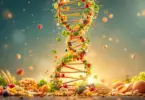Guest writer for Wake Up World
Something strange and ominous is happening to young people, especially women but also to lesser numbers of men. They are dying of sudden heart attacks (acute myocardial infarction, AMI) without the classic symptoms of heart disease, chest pain or blocked arteries. They die quickly, as though struck by lightning.
Every year since accounting began, there has been a tiny number of persons in the U.S. who died abruptly for no apparent reason. In fact, the annual list of mortality statistics issued by the U.S. National Center for Health Statistics included ‘unknown cause’ as a category, along with heart disease, cancer, stroke, and so on, until about 10 years ago. It was about that time that I called a statistician at NCHS to ask if the number dying for unknown reasons was going up. His answer was a definite and frustrated ‘Yes!’
[pro_ad_display_adzone id=”110028″]
Federal biostatisticians go to considerable lengths to determine a cause for every death on U.S. soil. People are simply not allowed to die without a good reason. And yet, despite their best efforts, there was a rising number of deaths that no one could account for.
NCHS appears to have solved the problem and now everyone who dies can be placed in an acceptable category. Since each death involves a heart that stops beating, deaths for ‘unknown’ reasons have become deaths from ‘heart attacks.’
A recent article in the Journal of the American Medical Association sounded an alarm and made the evening news: increases in the number of heart attack deaths between 1996 and 2004, occurring in young, healthy and symptom-free women has shocked the medical community. Deaths from ‘unknown causes’ remain and now happen often enough to have the attention of physicians, researchers and the government.
In the dry but riveting language of a medical journal:
The risk among [young] women relative to men … is not … explained by differences in MI severity, comorbidity, or treatment.… The reasons for this age-dependent disparity in mortality [for younger women] are not clear.
Translation: We haven’t a clue what is going on.
The statistics include only those who die of sudden heart attack in the hospital. Abrupt cardiac failure also happens to men and women who die outside of the hospital and to unknown numbers who look sudden death in the face but survive. It occurs to those with heart disease, high blood pressure, obesity or diabetes, and the elderly, and those ’contributing factors’ are blamed for the death even when they are not responsible. According to NCHS, death certificates listing Acute Myocardial Infarction as the primary cause actually occur almost 30% more often than officially tabulated.
The total incidence of sudden death that can be attributed to nothing beyond heart failure is a complete mystery. The young and symptom-free may be the tip of the iceberg.
The occurrence of acute myocardial infarction among the young and even the very young, was first documented in 2001. The CDC cited an increase of 281 deaths, or 30%, to women ages 15 to 34 between 1989 and 1996. Fifty-six of those were younger than 25.
By 2008 the American Heart Association reported that ‘heart disease’ kills about 16,000 young women annually and accounts for 40,000 hospitalizations in young women.
And in 2009 the Archives in Internal Medicine reported that
roughly 9,000 American women under age 45 have heart attacks each year…
In a just over a decade, the almost inconceivable had become common place.
Parallel to the rise in sudden, symptom-free, death, other things were happening in the 1990’s.
Allergies, a defense mechanism mounted by the immune system, were on the march. Several sources estimated that allergies had doubled or tripled in the past 20 years, and that included only those easiest to count, like the relatively benign hay fever or the lethal anaphylaxis.
Allergic reactions can be induced by, literally, anything, from the food we eat, to the medicine we take, to the air we breath and more. Symptoms are often vague and general, making it impossible to get an accurate fix on their prevalence. Was that stomach upset caused by an allergy or was it bad food? Was the headache due to an allergic reaction or stress? Was the death due to a sudden allergy-induced heart attack or was it something else?
The medical community has yet to come to grips with the fact that allergic reactions can cause absolutely any random symptom, disorder or consequence, limited only by the tolerance and ingenuity of the human body. But they know for sure that there is a lot more of it than there used to be.
Also beginning in the 1990s, the ever-increasing, legal, adulteration of the U.S. food supply went into high gear.
We got used to the long list of unpronounceable words on the ingredient labels of processed food: the assortment of modifiers, stabilizers, flavors, fillers, colors, preservatives and whatever added to food.
Now, packages of meat were treated with gas to preserve the surface appearance and therefore the shelf life. The gasses also made their way into the food and us, the FDA’s magical thinking notwithstanding.
No testing or labeling required.
Food was now irradiated to more efficiently eliminate bugs and bacteria so that processors weren’t bothered providing safe and sanitary food. Radiation damages the structure and nutritional content of the food.
No testing or labeling required.
Nanoparticles, which research is showing to be extremely toxic to everything from sperm growth to brain cells, is entering the food supply and migrating into our bodies from sunscreen, treated fabric and more.
No testing or labeling required.
But there was an even more unsettling change at the grocery store. Many basic foods, the stuff that had successfully sustained life for eons, was being altered through the genetic modification of their DNA into something never seen in nature. The vast majority of soy, sugar beets, canola, and corn crops are today genetically engineered. They are processed into those unpronounceable food additives, and can be found in virtually every kitchen in America.
Genetic engineering means that we now ingest foods that are themselves pesticides, herbicides, and may contain transgenic DNA from other animal species. Does the human body give us a pass? Or are there serious, as yet unidentified, consequences?
Although nature doesn’t allow cross breeding between species; although many studies have found serious health issues with GM food; although GM food has been largely rejected in Europe, in the U.S. it remains unlabeled, untested and ubiquitous.
The American media keeps U.S. citizens in the dark about the genetic modification of the food supply, a subject that has roiled the populations of other countries. Monsanto fights continuously to suppress the results of negative tests and to prevent the labeling of genetically modified food.
“If you put a label on genetically engineered food you might as well put a skull and crossbones on it.” – Norman Braksick, president of Asgrow Seed Co., a subsidiary of Monsanto, 1994
We are the unknowing guinea pigs in an international Monsanto-FDA experiment, with media collusion and no records kept.
This article is dedicated with sadness to the family of Lauren M., 1984-2012, and all others who have buried loved ones without knowing why.
In addition to increases in sudden heart attack, asthma and allergy, other conditions have been increasing since the mid-1990s and the advent of genetically modified food.
Autism: In 2000, the CDC reported a rate for autism that was 6.7 per 1000 children 8 years old. In 2012 they reported a rate of 11.3 per 1000, an increase of almost 70% in little more than a decade.
Foodborn illnesses: ”Figures released at the end of 1999 showed a two to ten-fold rise in food-related illnesses compared with 1994.”
Dementia, Liver Failure. Obesity: Linked to high fructose corn syrup, a genetically modified sugar substitute.
Superweeds: One of the effects of the mass application of Round-Up Ready GM seeds.
About the Author
Cameron Salisbury is an award-winning public health biostatistician and epidemiologist in Atlanta. She researched and wrote articles that appeared in medical and public health journals and was regarded as an expert on research design and human subjects protection. She was a peer reviewer for an international medical journal and a scientific advisor to state and local governments.
[pro_ad_display_adzone id=”110027″]







